Archives
March, 2016
Select a different month in the archive
Language Delay in ASD Linked to Brain Symmetry
By Chelsea E. Toledo, M.A. on March 29, 2016
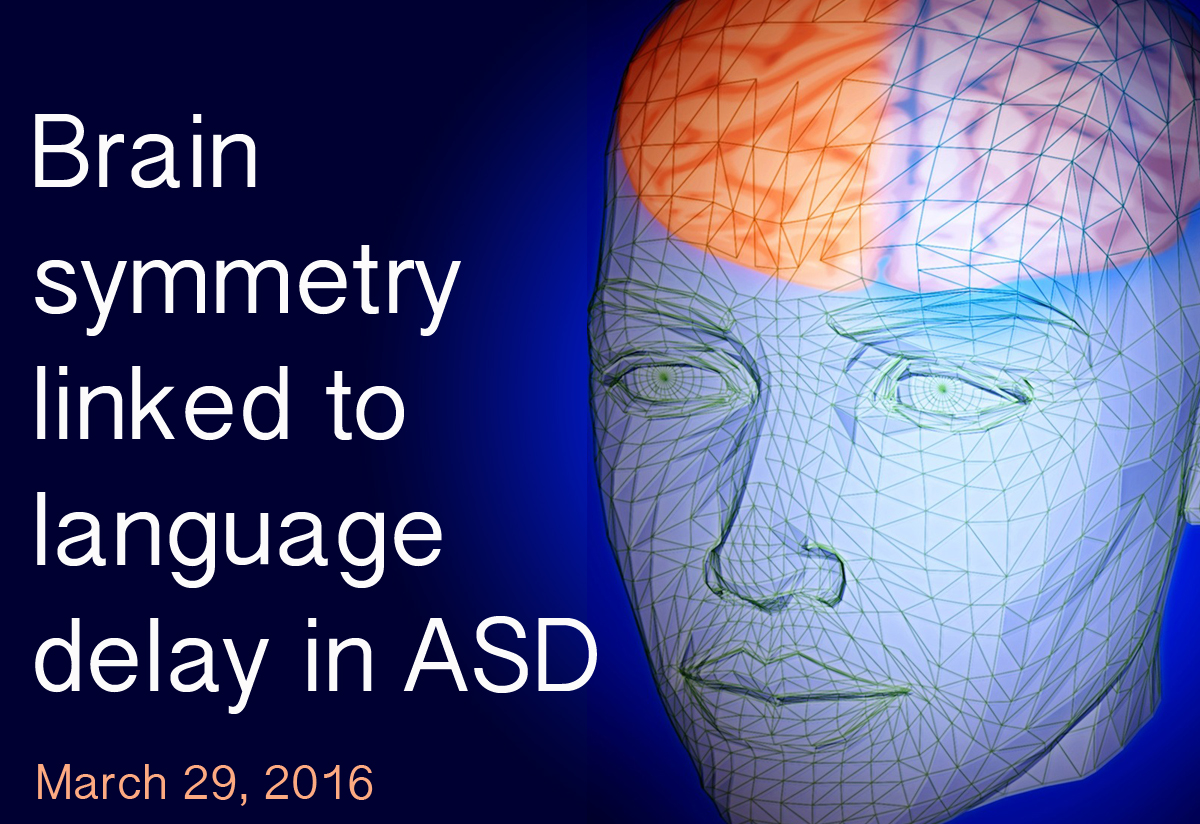
Background: Autism spectrum disorder (ASD) encompasses a broad array of conditions characterized by differences in socialization, communication, and behavior. One area where people with ASD can differ widely from one another is in language acquisition. Some individuals face severe delays in speech while others progress more typically.
What’s New: The January 2016 issue of Human Brain Mapping featured a study that explored the symmetry between brain hemispheres in individuals with or without language delay – defined as uttering one’s first words after 24 months of age or first phrases after 33 months of age. The researchers performed structural magnetic resonance imaging (MRI) on 136 right-handed men between the ages of 18 and 43 (67 with ASD and 69 with typical development). Participants in the ASD group had reduced asymmetry between several brain areas across the left and right sides of the brain, which was most pronounced in those with language delay and/or abnormal social functioning.
Why it’s important: This structural asymmetry of the brain could eventually help clinicians diagnose and understand specific subgroups of ASD. Future research could examine the brain symmetry of women and/or left-handed individuals with ASD.
Help me understand :
| Source(s) : |
| Tweet |
Study Probes Normalized Symptoms of Autism
By Chelsea E. Toledo, M.A. on March 22, 2016
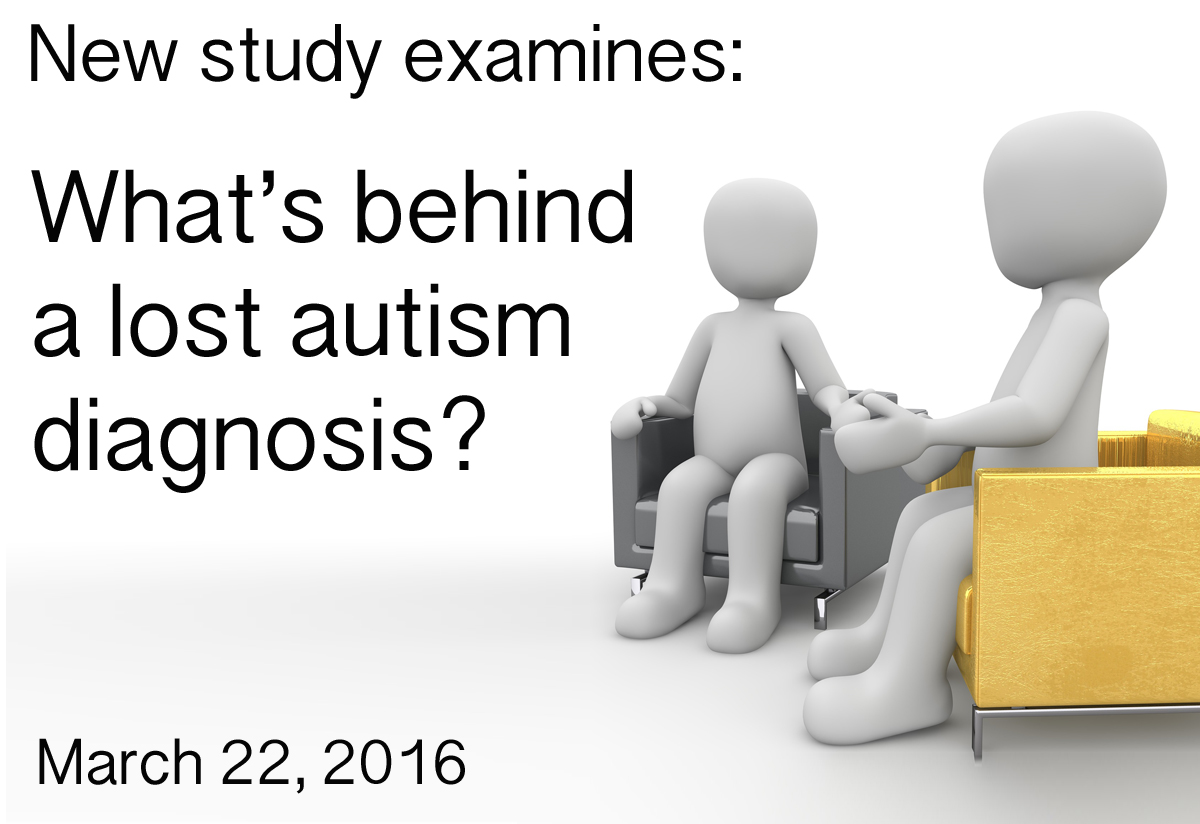
Background: Autism spectrum disorder (ASD) is generally characterized by differences in socialization, communication, and behavior. Research has shown differences in brain activity underlying these traits. However, certain individuals have been shown to “grow out” of ASD symptoms, with social, communicative, and behavioral traits mirroring those of their typically developing peers. Little is known about this phenomenon—do individuals experience suppression of atypical brain activity, or does the brain establish compensatory mechanisms?
What’s New: On December 2, 2015, the journal NeuroImage: Clinical published a study exploring the underlying brain activity of people with ASD whose symptoms became normalized later in life. The researchers administered a sentence comprehension task while performing brain scans on 59 participants between the ages of 8 and 21 (23 with high-functioning ASD, 20 with typical development, and 16 who no longer met the criteria for an ASD diagnosis). They found similar activity between the ASD and normalized ASD groups, with enhanced compensatory brain activation in the group with normalized symptoms.
Why it’s important: This study suggests that people with ASD do not “grow out” of the disorder, as their brain activity more closely mirrors that of people with ASD than those with typical development when processing language. Instead, the brain may compensate by increasing activity in language processing areas of the brain. Future studies could investigate patterns of brain activity when completing other types of tasks, and additional research may reveal the role of different types of therapy in ameliorating ASD symptoms.
Help me understand :
| Source(s) : |
| Tweet |
Diagnosis Differences in Adopted Population with ASD
By Shana R. Spindler, Ph.D. on March 15, 2016
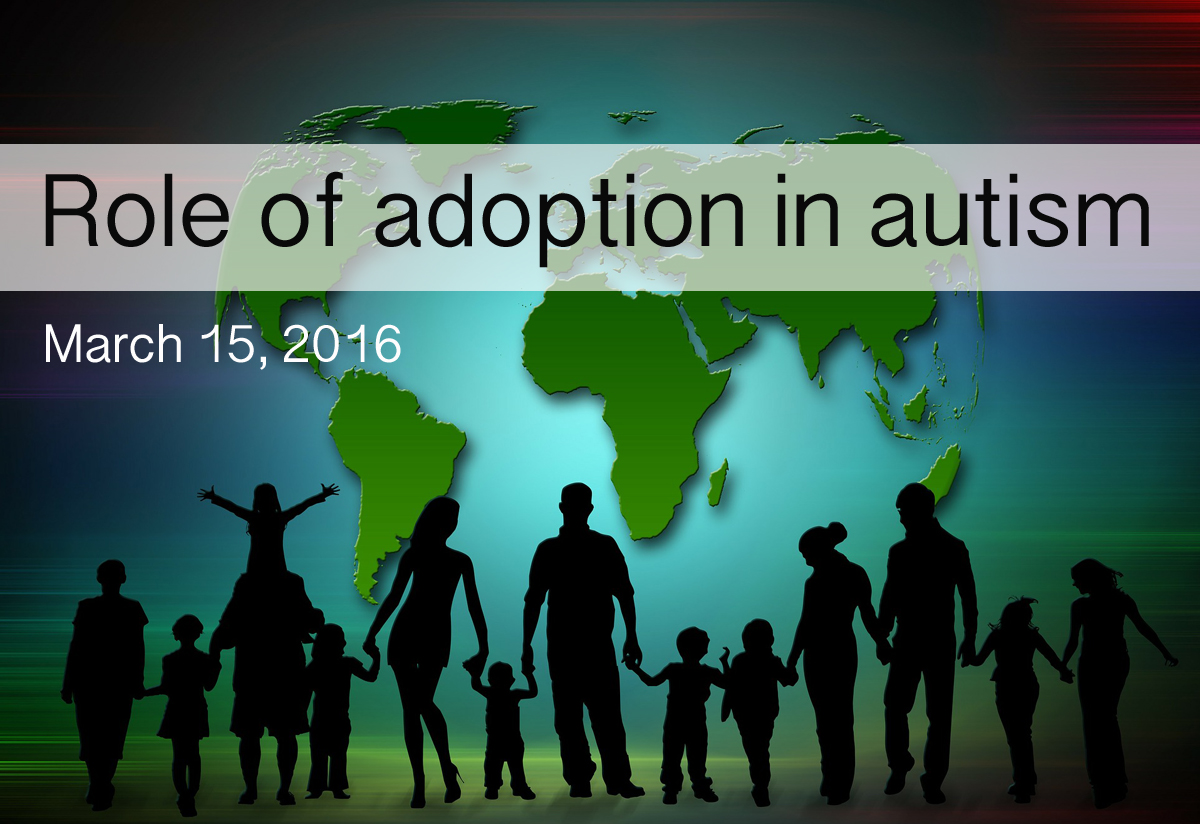
Background: Previous studies have linked adoption to general neurodevelopmental risks, but little is known about adoption as a risk factor for Autism Spectrum Disorder (ASD) specifically.
What’s new: In the February 2016 issue of the journal Pediatrics, researchers published a study exploring the differences in ASD diagnosis between adopted and non-adopted individuals. Using data in the Autism Speaks Autism Treatment Network, the researchers analyzed the cognitive ability, diagnosis, behavioral problems, and sleep habits for 163 adopted children and 5624 non-adopted children on the spectrum. They found that adopted children had increased:
- Attention problems
- Attention Deficit/Hyperactivity Disorder diagnosis
- Use of psychotropic medications
- Anxiety
- Depression
- Sleep problems
- Use of sleep medications
Why it’s important: This is the largest study of adopted individuals with autism to date. These results highlight the need for additional research in this unique subgroup, with a focus on factors associated with adoption—such as birth parent history, age at time of adoption, and history of institutionalization.
Help me understand :
| Source(s) : |
| Tweet |
Sleep Meds May Make Behavior Worse in Autism
By Chelsea E. Toledo, M.A. on March 8, 2016
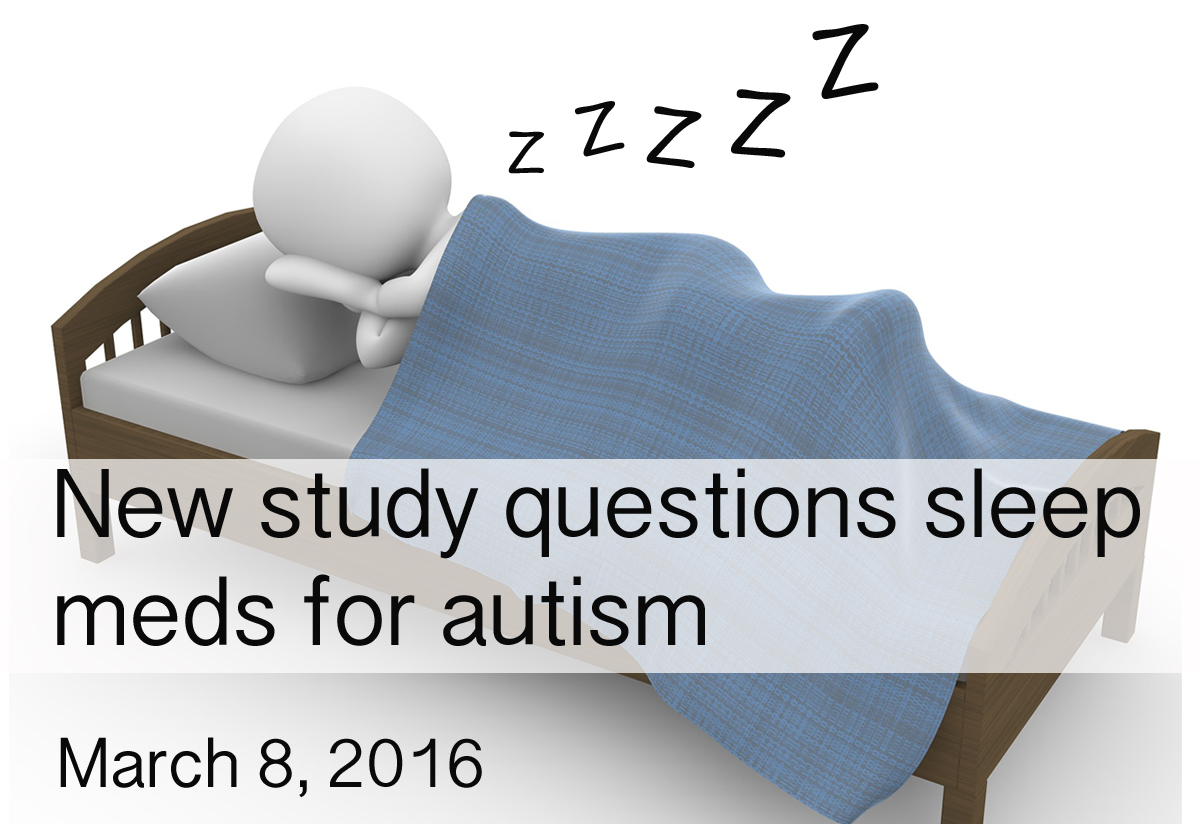
Background: Sleep disturbances are a common occurrence in children with autism spectrum disorder (ASD). Researchers have estimated that between 50 and 80 percent of people with the disorder experience difficulty sleeping.
What’s New: The February issue of Pediatrics included a study exploring the frequency of sleep difficulties and the use of sleep medications in children with autism. The researchers analyzed questionnaires from parents of 1518 children between the ages of four and ten who had been diagnosed with ASD. They found that – while only 30 percent of the children had a diagnosed sleep disorder – the scores of more than 70 percent of the children on a sleep habits questionnaire indicated significant sleep problems. In addition, the researchers found that the daytime behavior of the nearly 400 children prescribed sleep medications was reported to be worse than that of the children not taking sleep medications.
Why it’s important: This study underscores the need to screen for sleep problems during the diagnostic process for ASD. Future studies could investigate the underlying factors influencing the effects of sleep medications on this population to develop evidence-based recommendations for sleep treatments.
Help me understand :
| Source(s) : |
| Tweet |
Link Found Between Neural Stem Cell Division and Autism
By Shana R. Spindler, Ph.D. on March 2, 2016
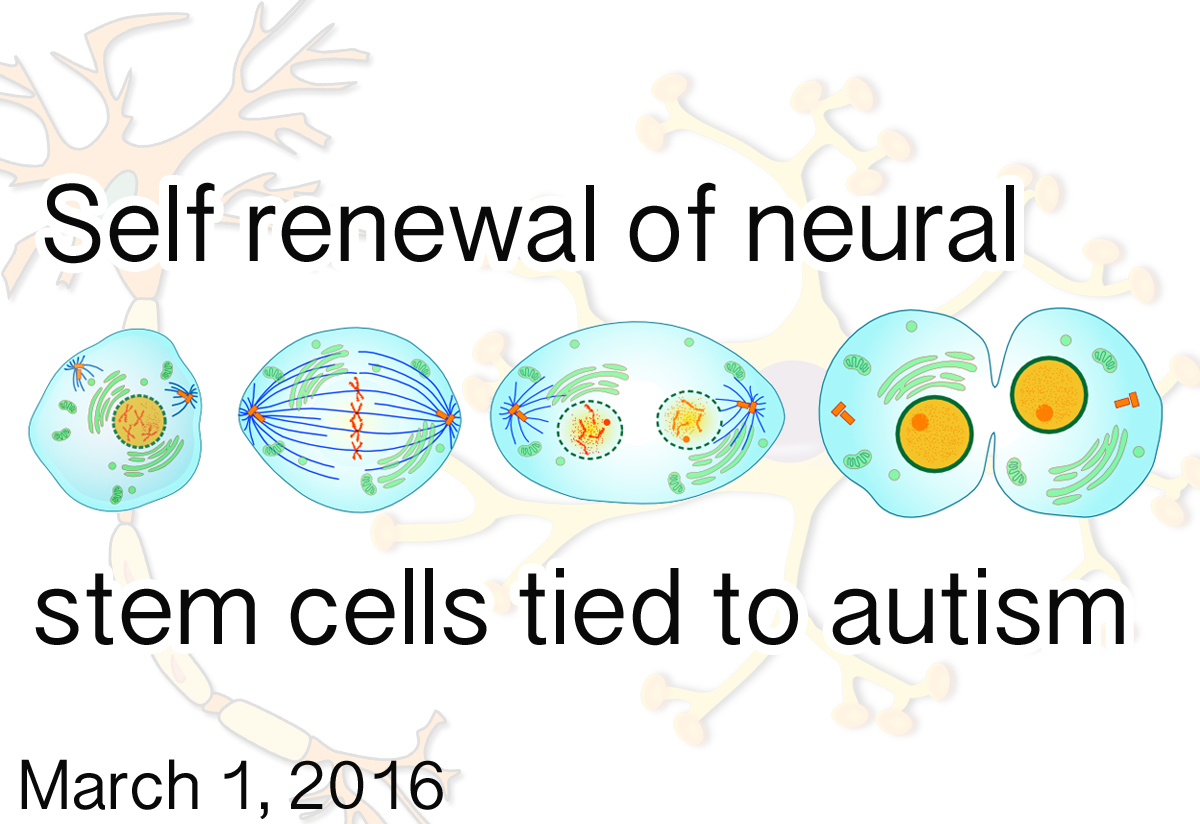
Background: The brain grows, in part, through the activity of neural stem cells—a cell population that replenishes itself through cell division. When a stem cell divides, it has three choices. It can make two new stem cells, a stem cell and a new cell type (such as a neuron), or two new cell types.
What’s new: An error in neural stem cell division may be at the root of neurodevelopmental problems seen in some metabolic disorders, according to a new study published February 9, 2016, in Cell Reports. Researchers used mice to study if neural stem cell division requires the autism risk gene TMLHE—which is an important contributor to metabolism and energy production in the powerhouse of the cell.
They found that TMLHE is required to maintain the proper balance between neural stem cell self-renewal versus the production of different cell types. The researchers showed that providing TMLHE-deficient stem cells with carnitine, a normal product of TMLHE activity, restored the balance of neural stem cell divisions.
Why it’s important: This study provides a potential mechanism for how a known autism risk gene leads to a type of autism associated with a metabolic disorder. Most importantly, the findings suggest an avenue for treating the disorder during embryonic development with carnitine, a common nutritional supplement. While it may be tempting to get excited, this is a far off goal, as many—many—additional studies are needed before attempting to study this in humans.
Help me understand :
| Source(s) : |
| Tweet |

